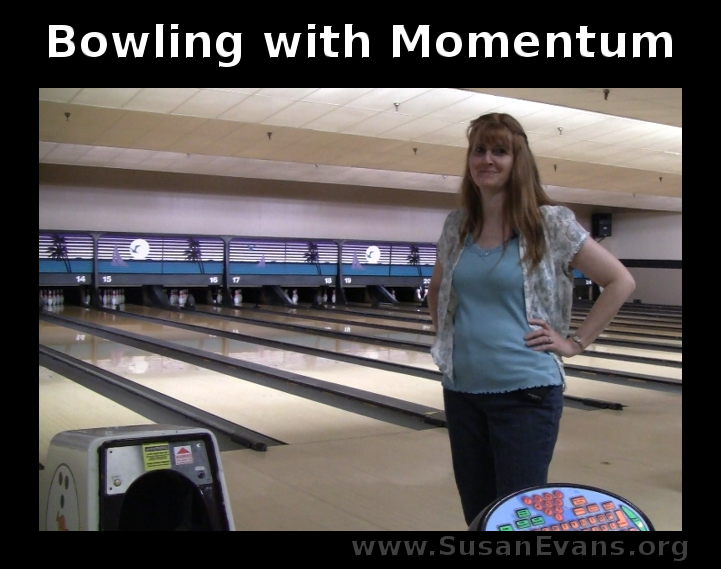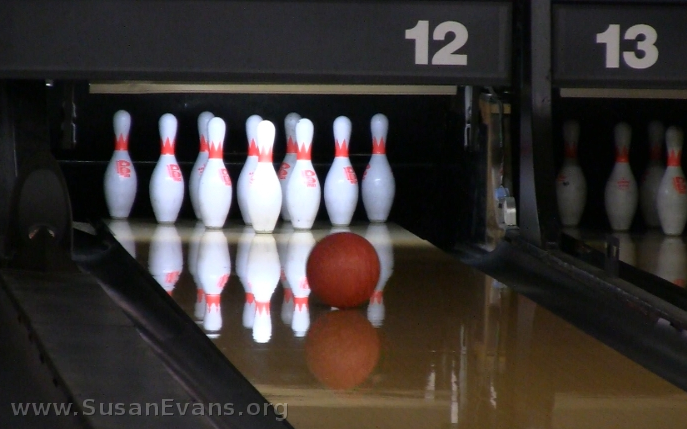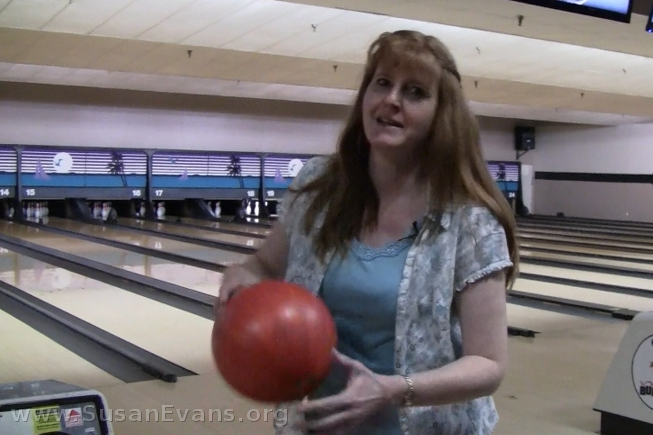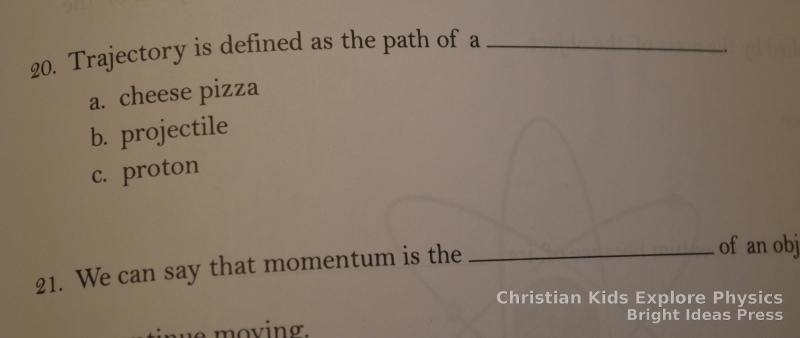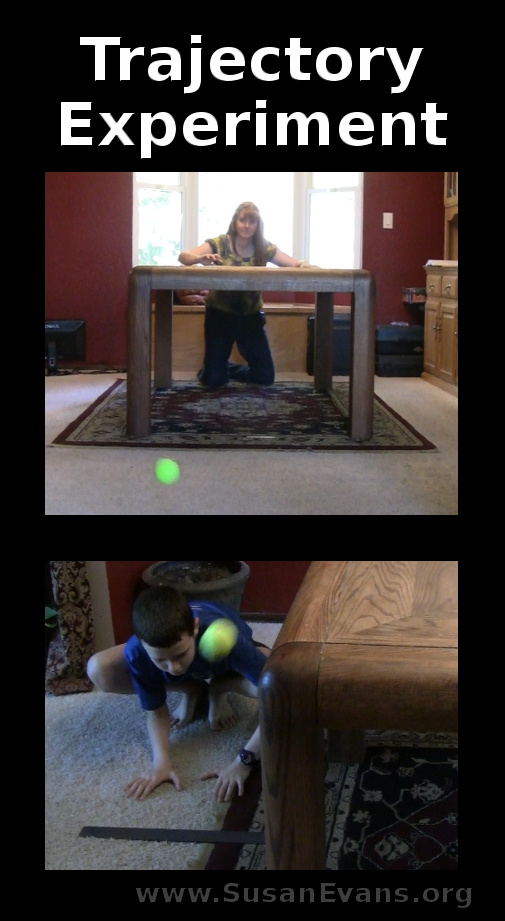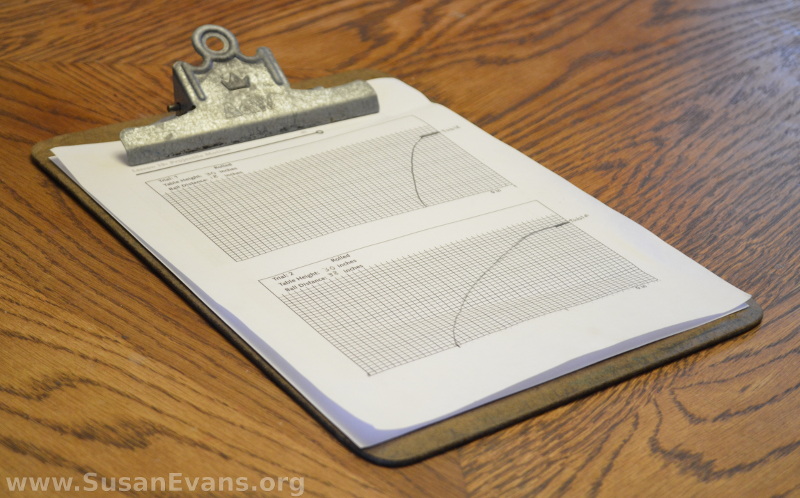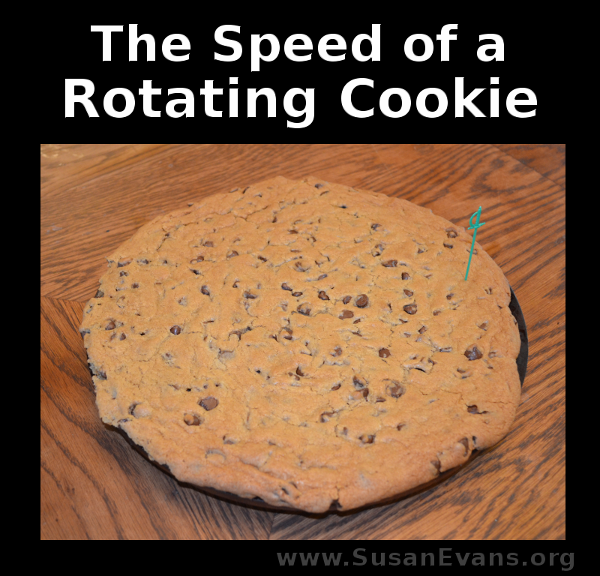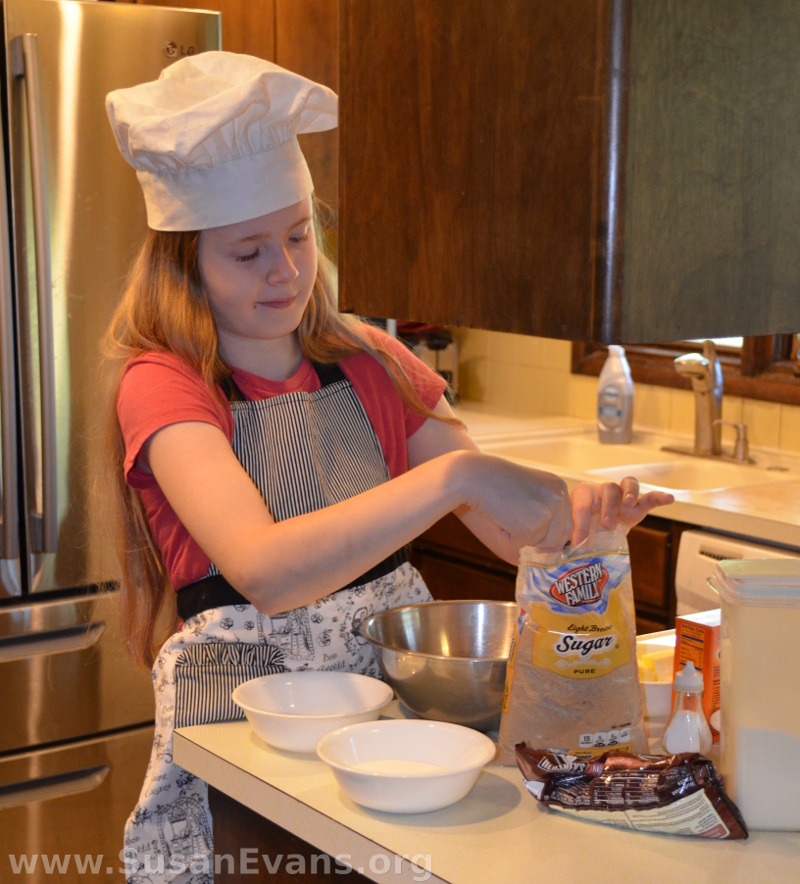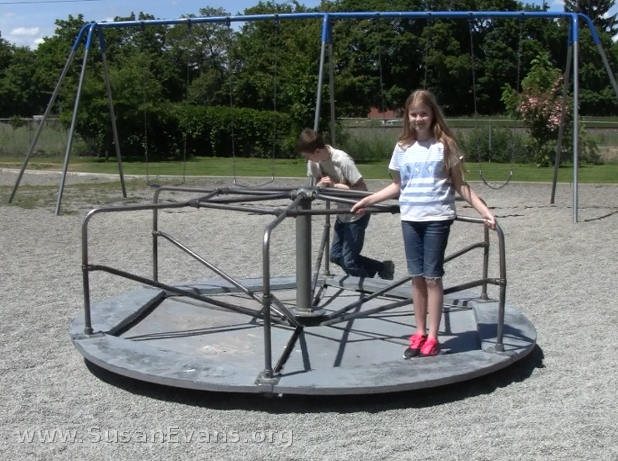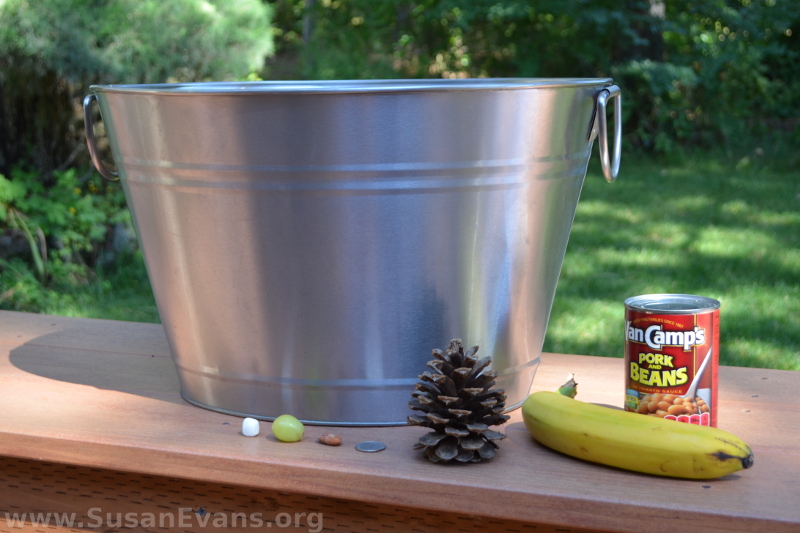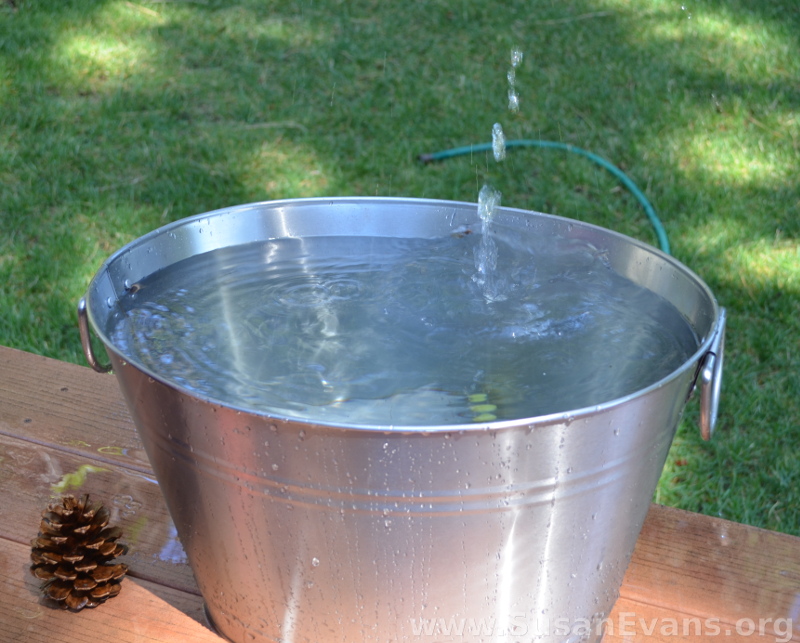Today we are going on a field trip to a bowling alley: we will be bowling with momentum! Momentum is defined as the tendency of an object that is moving to continue moving.
How do you find momentum?
You find momentum by multiplying mass times speed:
momentum = mass x speed
In the case of my bowling ball, I saw on the TV screen above my head that my bowling ball was moving down the lane at 16 miles per hour. My bowling ball was 10 pounds. So the momentum was 160 pounds-miles/hour.
Bowling Experiment (video)
This post contains affiliate links. I was compensated for my work in writing this post.
We have been learning about momentum from Christian Kids Explore Physics by Bright Ideas Press, and this is one of the hands-on activities in the book. As you can see in the video, less speed or a lighter ball will decrease momentum. More speed or a heavier ball will increase momentum and be more likely to knock the pins down.
When my kids were toddlers, they would roll the bowling ball down the lane, and it sometimes stopped halfway down the lane because it lacked momentum. You need to give a ball enough speed so that the ball has enough momentum to keep going forward.
If the child had used more force (to increase the speed of the ball), it would probably not have come to a complete stop. (A heavier ball would have helped, too, but my toddlers could barely lift the lightest ball!)
Why not go to a bowling alley this week and see if you can increase the momentum of your bowling ball and improve your score?
